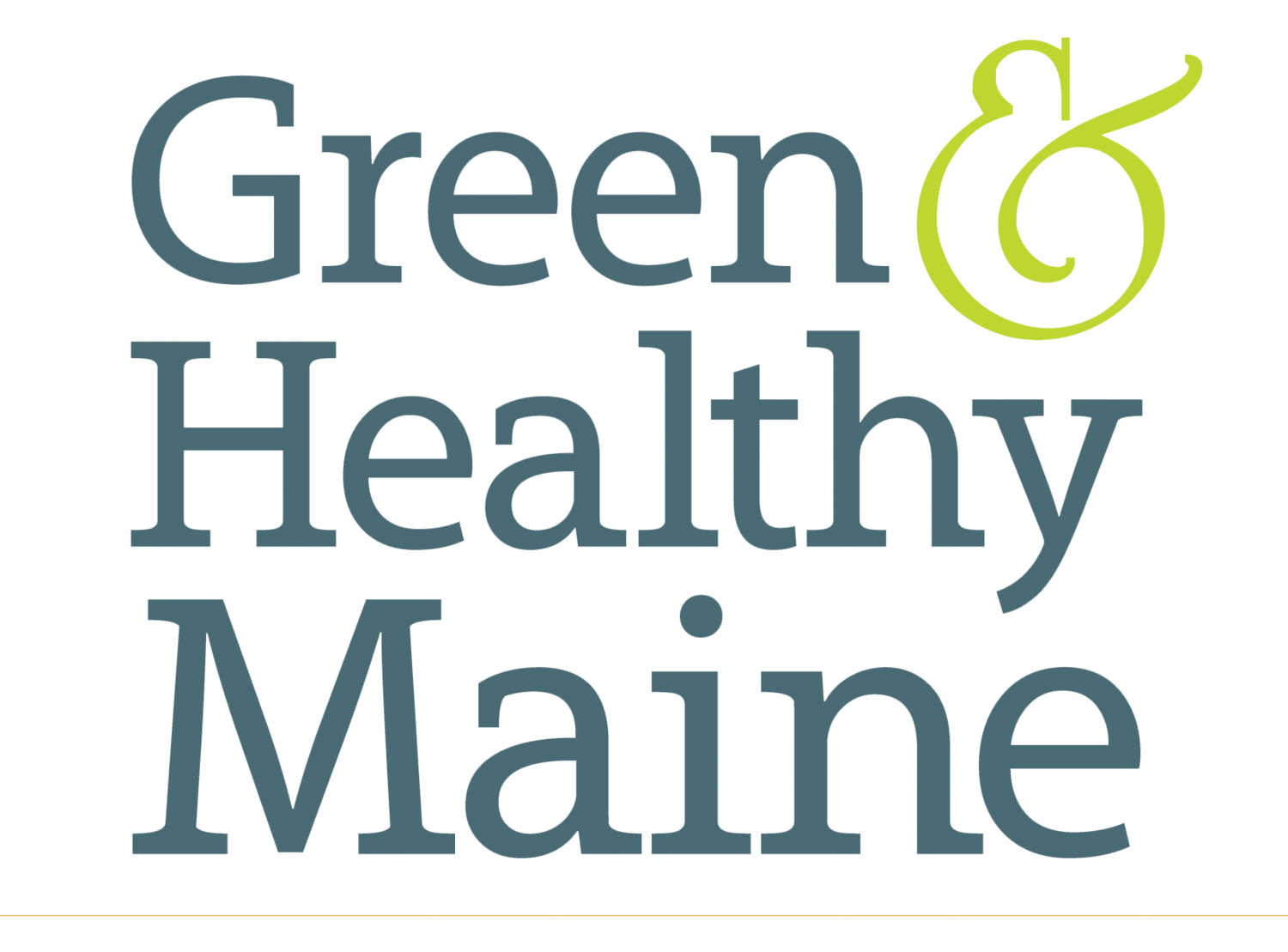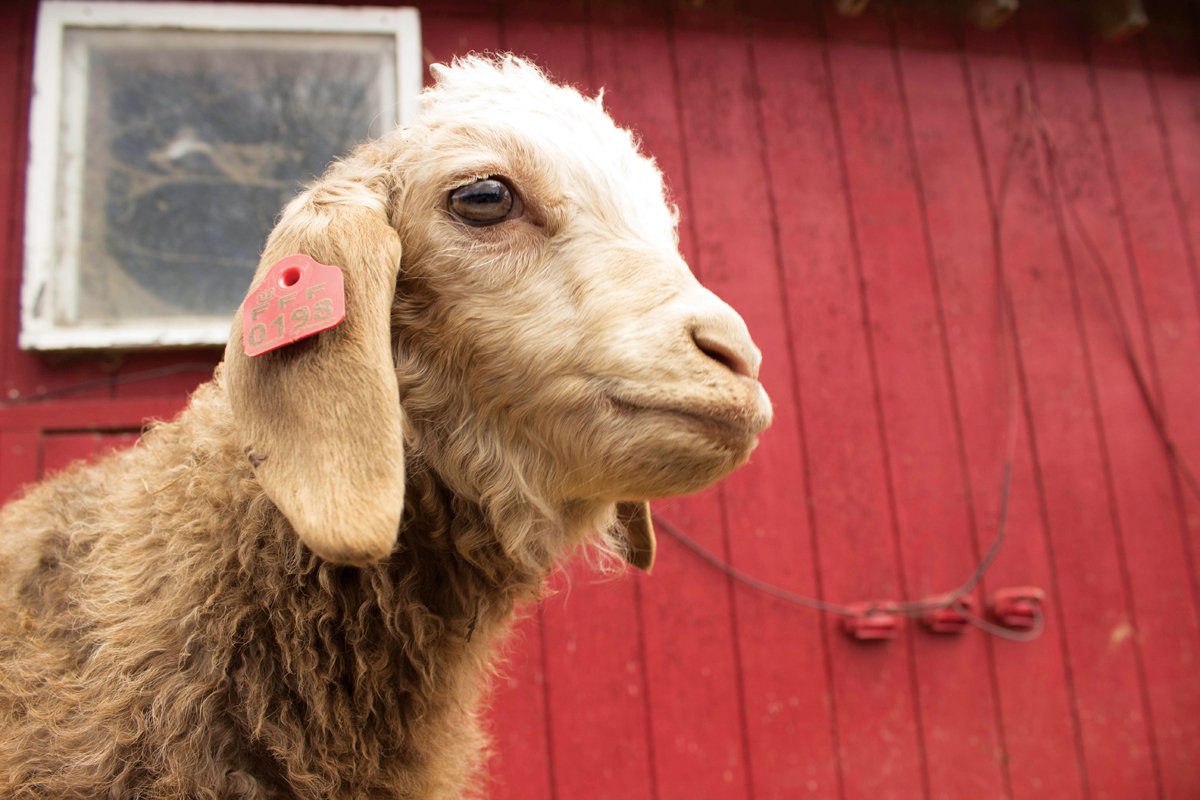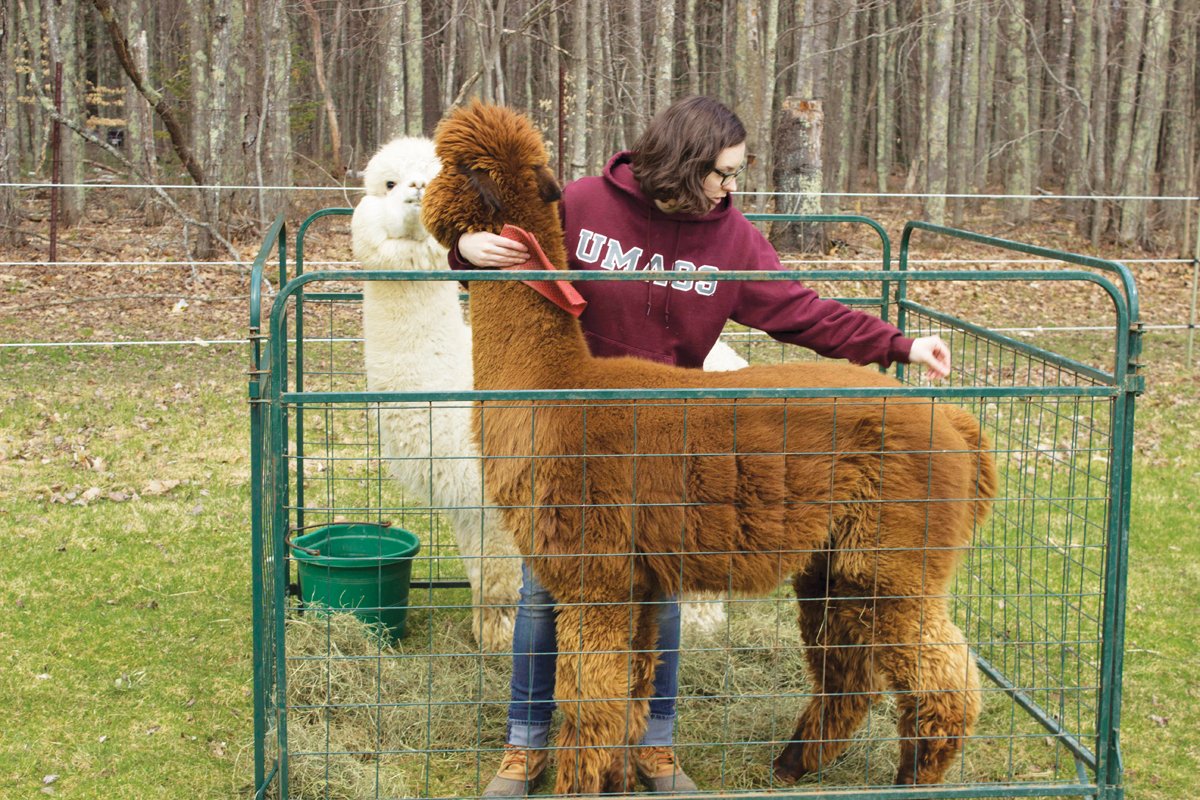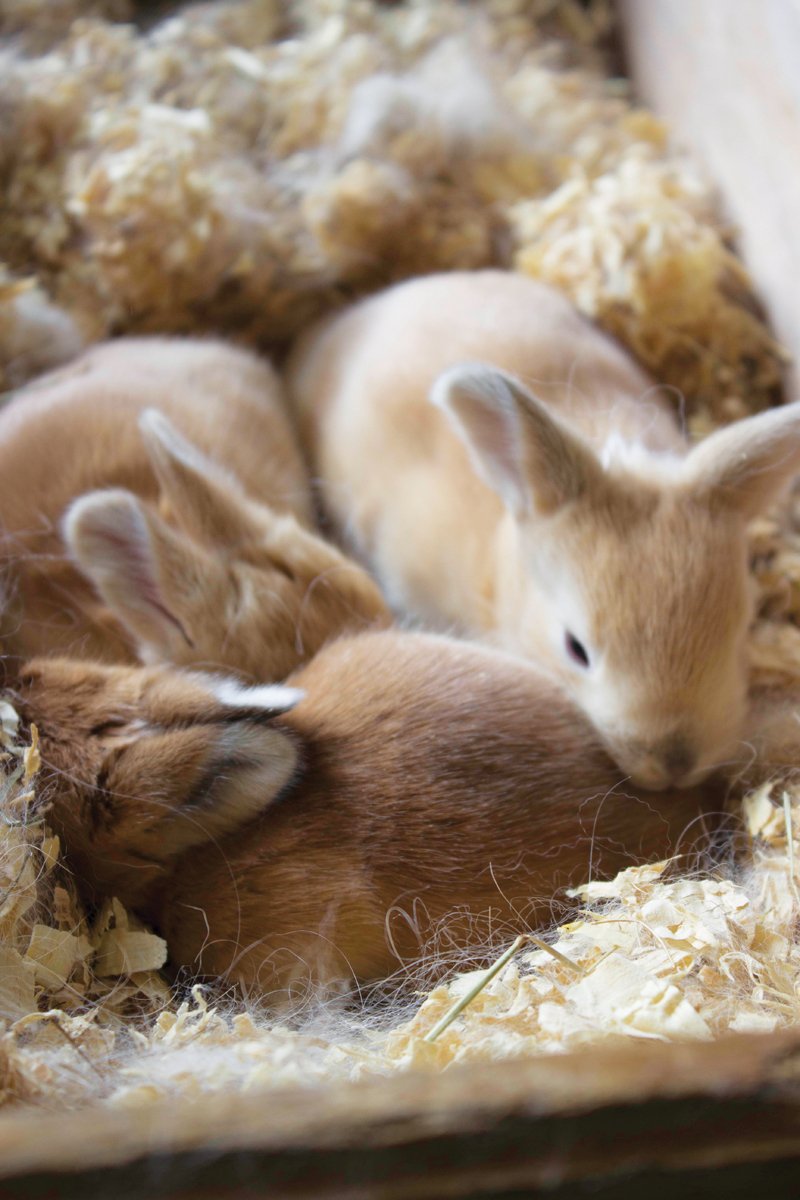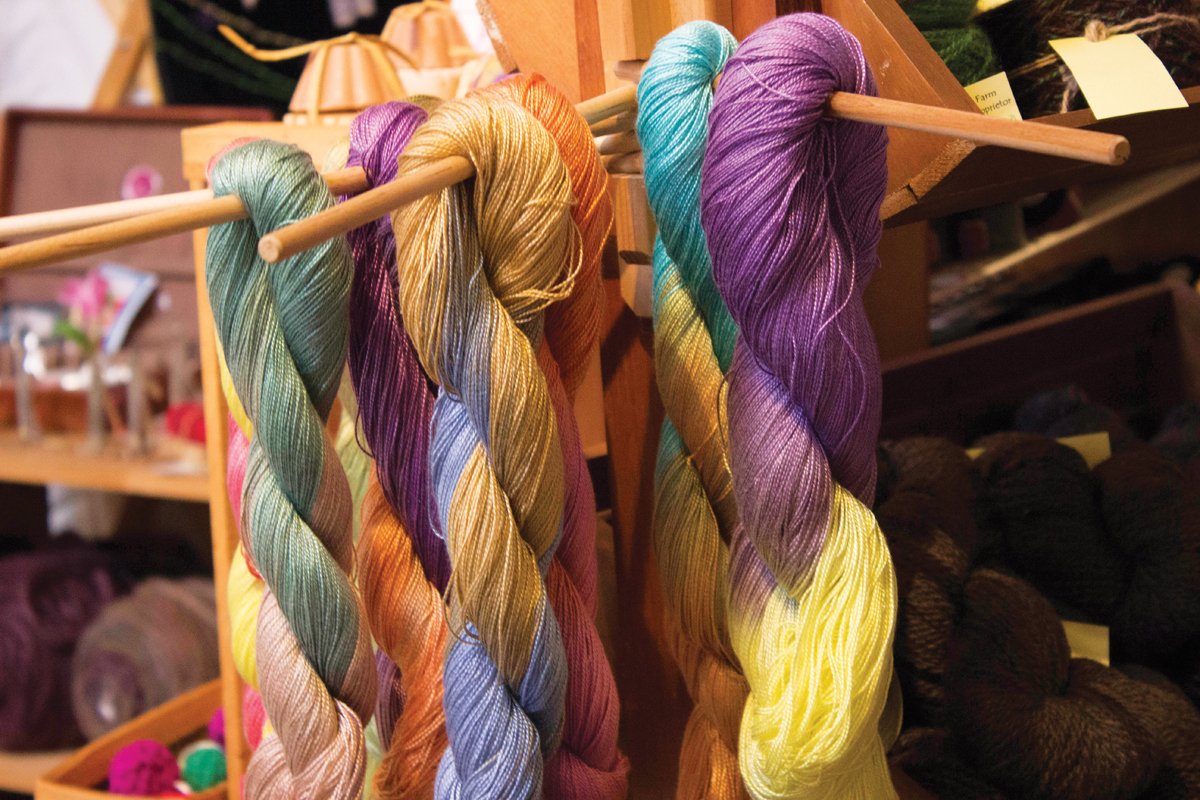Farm to fleece: Maine’s vibrant fiber scene starts with its farms
Elvis, a playful angora goat at Friends’ Folly Farm, in a rare moment of calm. His wool will be harvested and spun into yarn for sale at the yurt and online. Photo: Abby Mattingly
By Caitlin Gilmet
Friends’ Folly Farm in Monmouth features ‘Yarn in a Yurt’ an inviting 30-foot structure which houses a learning center, shop and resources for fiber fans. Photo: Abby Mattingly
There’s a good chance that your next blanket or sweater wasn’t just made in Maine—it was born and raised here, too. Take a short drive into farm country, and you might even get to meet the sheep, goat, alpaca, llama or rabbit that produced it.
Maine’s diverse and growing fiber production and arts scene is yours to explore, and it’s hyper-local, from small farms to mills, to shops and art galleries.
From fleece to the future
Maine’s deep history in textiles manufacturing sustained the state during the Industrial Revolution. That tradition is enjoying a resurgence in Maine, and across the nation, fueled by sustainable small-scale farms—operations that have tremendous reach and impact, despite their size.
The rebirth of the small farm movement grew out of a national interest in organic food and agriculture, and this support for small farmers has helped to develop stronger local markets and opportunities for entrepreneurs, including fiber producers and fiber artists. The idea of “farm-to-table” food systems has helped Americans think differently about how everything we buy, from our food to our clothing, affects our ecosystems and economies.
Across the country, small farmers are returning to traditional methods of farming, free from pesticides and other toxic chemicals, and they’re selling their products in increasingly robust local economies that are sustained by co- operation. Today, more than 30 percent of farm operators are women. Our state’s fiber farms reflect national trends in small farming, with a hefty dash of innovative, resilient Maine spirit thrown in for good measure.
“A love of fiber is in our DNA,” says Christine Macchi, executive director of Maine Fiberarts in Topsham, the central resource for Maine’s textiles community. “There’s the memory here, the tradition of making coverlets to keep families warm, and of teaching, sharing techniques and knowledge.”
It was Christine’s love for spinning and creating handknit treasures that led her to workshops and the Common Ground Country Fair’s annual gathering in Unity, where she bought fleeces in the fiber tent. “I started to meet the farmers who raised the animals, which led me to fiber processors, and to museums and galleries dedicated to fiber art,” she explains.
She started Maine Fiberarts in 2000 to raise the profile of fiber arts in Maine and act as a clearinghouse for information related to Maine’s robust fiber community.
Today, Maine Fiberarts is a thriving organization, and Christine is gratified to meet people from all over the world who come to experience Maine’s fiber scene. She says that “learning vacations” are an important trend in tourism, and she’s excited to help people experience the state while supporting our local, and often rural, economies.
Sorting it out with alpacas at Longwoods Alpaca Farm
In 2004, Pamela Harwood was a hockey mom and an investment business professional—and a recent survivor of cancer. “I learned how to knit while going through chemo,” she says. “So much of the wool was much too itchy for me. I tried knitting with alpaca wool, and it was fabulous.” She was disappointed to find that not all of the commercial fiber she purchased was high-quality, so she started educating herself about wool production techniques.
Jenna, the farmhand at Longwoods Alpaca Farm in Cumberland, attends to an alpaca that is about to be sheared. Photo: Abby Mattingly
Once she was given a clean bill of health, Pamela reassessed her life and decided to start a small farm. “We had the land, so I built a barn,” she says. “I knew after an ‘open farm’ visit nearby that this was something I could do. And it would guarantee me a steady supply of high quality yarn.”
Pamela turned out to be a quick study when it came to animal husbandry, farm management, marketing, and fiber processing. Longwoods Alpaca Farm in Cumberland, just fifteen minutes north of Portland, is home to a lively herd of alpacas and a watchful chicken named Charlotte.
With help from her apprentice, Jenna Mongeau, she oversees a shearing event in April for her animals and alpacas brought in by neighbors. Jenna brushes down each animal carefully to remove vegetable matter while the fleece is still on the animal, and the shearer gently ties down the animal, rolls it onto a sheet of plastic, and shears off the fleece. Within a half hour, alpacas Simon, Forest, and Moose are back in the pasture, looking skinny and awkward with their new haircuts.
Pamela notes that healthier animals yield a higher quality product, so she’s thoughtful about their diet and care. “Alpacas are easy on the land, and if they’re not overcrowded, they won’t eat the grass down to a nubbin,” she says. “They don’t have hooves, just two toes and a footpad, so they don’t chop up the pasture. We feed them hay and barley from a local farm, which provides a source of income for a neighbor. Best of all, fiber regrows, so it’s a truly renewable resource.”
She recognized early on that fiber sorting, or carefully dividing a whole fleece into parts based on fiber lengths and other factors, plays an important role in determining the end product’s overall quality. After study and an apprenticeship, Pamela is a Certified Sorter, and she belongs to a co-op that accepts only Certified Sorted fiber. “Uniformity in the fiber makes it better,” she says. “I look for length, color, and fineness.”
Sorted wool runs through the mill more evenly, and there’s less waste and more product to sell. Mills tell Pamela that her wool “spins like a dream,” and the proof is in her product, available on her website and at nearby farmers’ markets. www.longwoodsalpacas.com
Blending bunnies and business at Ackers Acres
At Ackers Acres in New Gloucester, Beth Ackers has been working with angora rabbits for 35 years, and her farm is New England’s largest of its kind. Beth grew up on a potato and livestock farm in Aroostook County, where her mother taught her to knit.
She started showing rabbits on the New England show circuit. It’s there that she met fiber spinners and learned how to spin her own wool. She decided to transition into fiber production after falling in love with the process of spinning.
At Acker’s Acres in New Gloucester, baby angora rabbits are the surest sign that we made it through another long Maine winter. Photo: Abby Mattingly
Today, Beth has 105 rabbits, and she chairs the Maine Angora Producers group, which serves as a line of support and information for the community. “There are a number of ways to learn from others about spinning and fiber production. It’s helpful and we enjoy reviving the craft, spreading knowledge, and working together.”
Beth says that angora had a bad reputation in the 1930s, when it was first popular as an alternative to sheep’s wool in sweaters and scarves. The short fibers “fell out,” meaning that they weren’t grown long or knit tightly enough, so the sweaters shed fiber. “A friend of mine wore a commercially-produced angora sweater, and it fell apart by the end of the day,” Beth recalls.
Angora lacks elasticity and memory, so Beth developed her unique BunnyBlend™ product, which is 40% angora and 60% wool from local sheep farmers. “It’s farm grown, hand-harvested, and it doesn’t shed,” she says.
“Angora is a luxury fiber,” she continues. “It’s seven times warmer than sheep’s wool, and it’s beautiful. It has incredible warmth and softness. It actually blooms and blossoms in use.” The fluffy, soft layer that rests just above the knit is called a “halo,” and it’s prized by knitters and artists.
She recommends angora rabbits to anyone interested in raising animals for supplemental income because they’re small, easy to handle, and don’t require pasture or fences. They’re also sweet and personable. “They’re the calmest and gentlest of the rabbits,” she says, lifting a large white rabbit into her arms and petting its ears. “And spinning is a quiet, meditative hobby. I get to be creative, to make my own yarn, and I spin with a rabbit sitting on my lap.”
Beth and the bunnies can be found at events across New England throughout the year, and her farm is home to a fiber studio and yarn shop filled with handmade crafts and gifts. www.bunnyblend.com
Worth its weight in goats at Friends’ Folly Farm
Once Beth Ackers has harvested her angora fibers, she sends them up the road to Marcia Marron and Pogo Pogovek in Monmouth to be processed in their small mill. Marcia and Pogo greet visitors with a smile and welcome them to Friends’ Folly Farm, which has been a hub of activity for the last 27 years in Monmouth.
Pogo and Marcia started small, but quickly learned that their powerful interest in new techniques and care for quality would mean exploring new frontiers. They bought a carder, which disentangles, cleans, and mixes fibers, in 1992 after struggling to find local processors for their wool. The machine’s technology was developed during the Indus- trial Revolution and pre-dates spinning. It allows Pogo and Marcia to process bundles of carded fiber, called roving, on the farm. They also spin and dye the wool they produce.
“There used to be ten mills in Maine with this kind of equipment,” says Pogo, as a heavily pregnant goat named Blue sidles over to have her belly rubbed. “Small scale processing has come full circle, and there’s such a wonderful focus on quality and innovation. It’s so much fun for us.”
For years, they processed wool from other farms around Maine, using production techniques they’d seen in small mills across North America, including Prince Edward Island. Now that Marcia has retired from her career as a school occupational therapist, they’re focusing on their own animals’ roving and yarns.
Besides the barnyard full of mischievous, affectionate angora and meat goats, the other attraction at Friends’ Folly Farm is Yarn in a Yurt, a spacious, lavender-scented re- tail space and fiber library. Pogo and Marcia sell their own Friendz Blend fiber products, upcycled antiques and gifts, and yarns and supplies for fiber fans of all kinds. Visitors will also find equipment, supplies, and patterns. Visitors are welcome to the farm, especially on Saturdays, when you can “bring your kids to meet our kids” and play with the goats before you shop for unique gifts and supplies in the yurt.
If you ask nicely, Pogo will even share her easy recipe for chevre—there’s nothing they won’t share if it means carrying on the traditions and legacy they’re proud to steward at Friends’ Folly Farm. www.friendsfollyfarm.com
Yarn in Yurt is a treasure trove for fiber, yarn, dye, knitting supplies, patterns, tools, books and gift items. Photo: Abby Mattingly
Magic, sheep and Maine at A Wrinkle in Thyme Farm
Tucked into the rocky hillsides of Sumner, you’ll find A Wrinkle in Thyme Farm, which was started 12 years ago by Maryann Haxton and Marty Elkin. They named the farm after Madeleine L’Engle’s classic novel A Wrinkle in Time, which features “tesseracts,” or wrinkles in the fabric that makes up the fifth dimension, that allow its protagonist to bend space and time to her will.
There’s no shortage of magic at A Wrinkle in Thyme. Nestled between the sugar house and the farmhouse, you’ll find the Tesseract Center, a building that houses a classroom, workshop space, and a retail shop. A map of the farm drawn by a child adorns a door, noting the locations of the farm’s ancient stone walls, its pole barn, and a few spots labeled “fairies live here.”
The women founded the farm after retiring from careers in nursing and education; Marty is still a lactation consultant. They were interested in translating their skills in teaching and care for others into creating a retreat center for homesteaders, and they knew they had a lot to learn.
Maine’s rocky terrain meant that they started by “farming the rocks,” as Maryann puts it, and so they discovered that they’d need to bring in sheep to mow down the fields. The sheep stayed after a neighbor suggested that the farm would be the perfect place for them. They harvested three bags of wool after their first year,“ and then we had to decide what to do with it,” recalls Maryann.
A Wrinkle in Thyme Farm offers classes, retreats, gatherings, showcases and much more in Sumner, Maine. Photo: Abby Mattingly
Marty learned how to spin after joining a group in Bethel, and she now serves as the farm’s “Fiber Queen” and resident artist, designing textiles, needle felting, dyeing, and working on fiber production. Maryann’s areas of expertise include the barns, fields, and animals, but they work together on everything, including construction of a new solar kitchen and outdoor oven that will enable them to move the dyeing process outside, with more space for workshops and events.
Today, A Wrinkle in Thyme features extensive learning and community engagement programs focused on animal husbandry, fiber processing, fiber art, and traditional “thriving skills,” among other programs. There’s a community supported agriculture program for fiber with over 30 members; members receive fiber in their preferred form for spinning, felting, or knitting. You can even adopt a lamb, complete with visiting privileges and rights to the fleece when it’s ready.
It’s clear that Maryann and Marty love what they do, and they’re passionate about holistic teaching and learning.
“We installed solar panels, so we have solar hot water for dyeing, and we have radiant heat with wood, so we’re not fossil fuel dependent,” notes Marty. “We’re always striving to be self-sufficient, sustainable, and resilient. That’s what it means to tesseract. We try to time travel to both ends of the spectrum, to the past and the future, to bring the best ideas together to support our vision for family, community, creativity, and quality of life in Maine.” www.awrinkleinthymefarm.com
Bathed in the sea at Seacolors Yarnery
Nanne Kennedy’s background also in- corporates deep knowledge about folk- lore and mythology—she studied sociology and art in college before her path led her to a post-graduate program in agriculture and resource economics at the University of Maine. Nanne’s the brilliant mind behind Get Wool, a sustainable wool farm and solar-powered yarnery in Washington, Maine.
“I grew up with the romance of farming,” she says of her childhood in Maine on a multi-generational farm. “We had the cows in the peonies, the old stone fences in the woods, and in the ‘60s my grandfather started a camp for boys.” Nanne wasn’t allowed to go “up the hill” to the camp until she turned 14, but she spent a lot of time exploring the land nearby and wondering what it had looked like throughout its history.
When she returned to the area as an adult, she decided to raise sheep.
“They’re a dual commodity and a fit for Maine’s topography,” she says, echoing Marty and Maryann. “There’s not a lot of arable land here, and as a vegetarian, I was most interested in fiber anyway.”
Sheep thrived on the land, which had abundant grass and water. “They’re small ruminants, so they’re less impactful. And fiber is nature’s solution to heating and cooling, so it made sense to work with something that allowed me to be as close to carbon neutral as possible.”
Her farm had been an old dairy, and she carefully restored it for two years in the early ‘90s. Five days before she was set to move in, while she was in town to collect its insurance papers, the farm burned to the ground.
“There were not a lot of young farmers in Maine at that point,” she says. “Maine’s economy was driving people away from farms in droves. I got depressed for about six months, and then I knew I just had to recommit. I was sitting on beautiful land, and I thought, ‘well, I guess at least I don’t have to clear the land now.’ It started there.”
Seacolor Yarns are a true Maine art form. Their color depends on the moods of the sea, the sun, and the natural materials used for dyeing. Photo: Courtesy of Nanne Kennedy
Nanne is a tremendous resource for information on sheep, and she talks a mile a minute about the differences between breeds. “Wool should not itch,” she says, and explains that she is passionate about educating consumers about the differences between apparel and carpet breeds. This part of the world has traditionally seen more meat breeds of sheep, which have thicker, scratchier wool that’s better used in carpets and heavy tweeds.
She notes that fine wool both insulates and cools because it has more fibers around a core of air. “Fine wool is worn by sheiks in desert climates,” she says. “It wicks beautifully, and it’s soft and light. It can even be machine washable; it’s easier to care for than people know.” She adds value to her wool from the beginning, by choosing quality breeds that produce wool in the superfine category.
Nanne developed her unique dyeing process in 1994. “It’s a completely closed loop, a sustainable system,” she says of the solar dyeing technique. “Many people think they have a wool allergy, but they may be reacting to carbonic or sulfuric acids used to set dye in lower-quality wool.” Her process is deceptively simple—just heat, acid, and salt. She uses a safe food-grade dye and acid, and uses seawater from near- by Great Salt Bay to set the color. Her upcycled solar thermal system also includes a sustainable irrigation system.
Nanne’s famous Maine Blanket and her Seacolor Yarns can be found on her website, and she is an active participant in trade shows, events, and professional associations. www.getwool.com
Weaving it together
Back at Maine Fiberarts, Christine Macchi credits small farms for their commitment to putting fiber arts on the map. “Maine is really extraordinary,” she says. “I always keep a notebook with me at the events we host, because the people are a real treasure trove of knowledge.”
She encourages visitors to Maine to contact her at Maine Fiberarts, and to visit her rich collection of online re- sources (see below) to learn more about the hundreds of farms, artists, shops, museums, and collectives across the state. She says she’s known more than a few knitters or hobby farmers who came to Maine on vacation, fell in love with the lifestyle, and decided to move here.
“This community brings so much to Maine in terms of economic development, sustainable agricultural practices, conservation, education, artistry, and resource development. There’s such quality and professionalism out there now, and that’s inspiring. And there’s such great energy and love for this work and this world. A lifeforce comes off a great fleece—you can just feel it. We all can.”
The best place to start if you love farms, fiber, and arts and crafting is Maine Fiberarts in Topsham. Open year-round, it’s the physical heart of the fiber arts community, providing space and support for networking, classes and workshops, a gallery space with rotating exhibits, and a community space for Fiber Friday gatherings once a month.
Maine Fiberarts also maintains two rich online resources: The Maine Fiber Resource Guide, which lists Maine’s mills, farms, producers, artists, galleries, craftspeople, shops, supplies, manufacturers, learning centers, and organizations.
There’s also the Fiber Folio, which updates frequently with stories about fiber arts from farm to consumer. Visitors looking for vacation inspiration will love the “photo journeys” in this living journal, a chronicle of everything Maine has to offer fiber fans. mainefiberarts.org | folio.mainefiberarts.org
Caitlin Gilmet grew up in the Midwest and now lives in South Portland’s Willard Square, where she works as a freelance writer, content strategist, and fundraising consultant. She likes tennis, biking, volunteering, and long road trips around New England.

